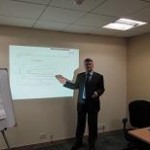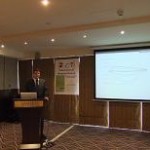Investment Consulting
Accredited Consulting Service for Dr. Valchev PhD MSE BBA Accredited Senior Consultant (ASC)
Executive Summary Video
The Appleton Greene Accredited Consultant Service (ACS) for Investment Consulting is provided by Dr. Valchev and provides clients with four cost-effective and time-effective professional consultant solutions, enabling clients to engage professional support over a sustainable period of time, while being able to manage consultancy costs within a clearly defined monthly budget. All service contracts are for a fixed period of 12 months and are renewable annually by mutual agreement. Services can be upgraded at any time, subject to individual client requirements and consulting service availability. If you would like to place an order for the Appleton Greene Investment Consulting service, please click on either the Bronze, Silver, Gold, or Platinum service boxes below in order to access the respective application forms. A detailed information guide for this service is provided below and you can access this guide by scrolling down and clicking on the tabs beneath the service order application forms.
Client Telephone Conference (CTC)
If you have any questions or if you would like to arrange a Client Telephone Conference (CTC) to discuss this particular Unique Consulting Service Proposition (UCSP) in more detail, please CLICK HERE.
Bronze Client Service
Monthly cost: USD $1,000.00
Time limit: 5 hours per month
Contract period: 12 months
SERVICE FEATURES
Bronze service includes:
01. Email support
02. Telephone support
03. Questions & answers
04. Professional advice
05. Communication management
To apply – CLICK HERE

Silver Client Service
Monthly cost: USD $2,000.00
Time limit: 10 hours per month
Contract period: 12 months
SERVICE FEATURES
Bronze service plus
01. Research analysis
02. Management analysis
03. Performance analysis
04. Business process analysis
05. Training analysis
To apply – CLICK HERE
Gold Client Service
Monthly cost: USD $3,000.00
Time limit: 15 hours per month
Contract period: 12 months
SERVICE FEATURES
Bronze/Silver service plus
01. Management interviews
02. Evaluation and assessment
03. Performance improvement
04. Business process improvement
05. Management training
To apply – CLICK HERE
Consultant profile
Dr. Valchev is an approved Senior Consultant at Appleton Greene and he has experience in finance, information technology and globalization. He has achieved a Doctorate of Financial Economics, a Master of Science in Economics and a Bachelor of Business Administration. He has industry experience within the following sectors: Banking & Financial Services; Consultancy and Technology. He has had commercial experience within the following countries: Switzerland; United Kingdom; Russian Federation; United Arab Emirates and United States of America, or more specifically within the following cities: Zurich; London; Moscow; Dubai and New York NY. His personal achievements include: conducted fundamental and quantitative research; developed financial trading strategies; introduced trading systems; developed derivative products valuation libraries and introduced risk management platforms. His service skills incorporate: investment management; risk management; emerging markets; derivatives trading and portfolio insurance.
To request further information about Dr. Valchev through Appleton Greene, please CLICK HERE.

Executive summary
Investment Consulting
The Investment Consulting service is oriented towards professional institutional investors: mutual funds, hedge funds, asset managers, pension plans, endowments, depositary institutions, private banks, family offices, insurance companies (life, property, casualty and health) and treasury departments of corporations, municipalities and government agencies. It delivers performance improvements in the areas of investment policy, asset allocation (strategic and tactical), securities selection and activity (shift to more active strategies)
Recent advances in finance, information technology and data management have transformed the investment management process and lead to the proliferation of investment strategies, styles, instruments, electronic front-to-back platforms, and more international diversification, and global investments. The current zero interest rate environment is characterized by decreasing fixed income returns and factor premiums, increased uncertainty (volatility of volatility), where many traditional passive and index strategies are generating low or even negative returns. In this environment, our service helps institutional investors with cross-functional engagements in the areas of: (1) asset allocations and securities selection processes to improve diversification, returns and their consistencies – to identify, explore and select opportunities in traditional (fixed income, equities, derivatives) and alternative investments (hedge funds, liquid alternatives, derivatives, real estate) in both developed – US, EU (Core and Peripheries), and selected emerging markets – Central and Eastern Europe, Russia, LatAm and GCC; (2) technological and methodological improvements by enhancing data-processing, electronic trading and portfolio management processes to reflect strategic multi-asset views and improving the abilities to express these views efficiently (e.g., designing factor investing strategies with positive cross-asset carry); and (3) automated portfolio factor analysis and risk management solutions are also offered.
Our service focuses on factor-based portfolio construction and insurance to reflect bespoke investment strategies (passive, active, alternative, and liquidity solutions) with exposures to specific investment factors as well as tail-risk hedging strategies. Factor exposure can be obtained and managed efficiently with ETFs, notes, certificates, warrants or derivatives. It entails portfolio management improvement – optimizing the usage of datasets, performance attribution, developing and managing exposure to risk factors, optimizing the usage of enterprise datasets. We also help in creating, backtesting and optimizing bespoke investment strategies, focusing on multi-asset solutions and usage of derivative overlays for both active and passive portfolio management. In the passive space, the low costs, transparency and consistency of index investing are enhanced by moving from traditional market-capitalization based weighting to smart and alternative beta strategies and portable alpha strategies. We help with analysis and implementation of new equity and fixed income smart beta strategies, enhancing return and decreasing the risk of indexed portfolios.
For life insurance companies and pension funds distributing retirement savings products, the Investment Consulting service helps with the design and development of new products (selection of index benchmarks, term sheets), and improvements of marketing and distribution processes. We also consult our clients on hedging strategies and solutions for mainstream products for both defined contribution and defined benefits schemes such as variable annuities, index annuities, indexed universal life and target date funds in the US market as well as unit-linked life insurance products in the EU.
Service Methodology
Our Investment Consulting service entails quantitative, structuring and risk advisory for portfolio management and investment strategies (single asset or multi-asset). We develop and implement quantitative model/product libraries for evaluation of assets in the portfolios and the derivatives overlays using standard software packages – Matlab, VBA, Bloomberg, Numerix. Investment strategies are also evaluated and tested with these packages, but occasionally the MetaQuotes Language 4 is used. We provide quantitative advisory with software systems of vendors such as Murex, Calypso and BISAM. We help on measuring and evaluating performance and on risk measurement. Solutions on managing the risk profile by using delta one, leverage or protection overlays are also provided. The execution of strategies with futures and options depends on the clients’ access to organized exchanges and their clearing services.
The Investment Consulting service offers cutting-edge technologies and methodologies for exposure management, breaking down exposure of a portfolio to systematic factors and idiosyncratic components. It introduces sophisticated Monte Carlo-based economic scenario generation hybrid cross-asset framework based on factor analysis and featuring co-dependence of risk factors and tail-risk. This allows for overlays and for expressing optimally specific views by using liquid alternative investments, derivatives, indices, trading strategy indices, ETFs, Delta-one certificates and funds. It includes creation, back-testing and optimization of multi-asset investment strategies and tail-risk hedging solutions. The investment management process is enhanced by extensive use of derivatives as stand-alone strategies or overlays to existing portfolios. Having a clear view on performance attribution allows for reducing (eliminating) undesirable exposures. Capital protection overlays are implemented by using specific rules and the models can be integrated with clients existing IT infrastructure.
Service Options
Companies can elect whether they just require Appleton Greene for advice and support with the Bronze Client Service, for research and performance analysis with the Silver Client Service, for facilitating departmental workshops with the Gold Client Service, or for complete process planning, development, implementation, management and review, with the Platinum Client Service. Ultimately, there is a service to suit every situation and every budget and clients can elect to either upgrade or downgrade from one service to another as and when required, providing complete flexibility in order to ensure that the right level of support is available over a sustainable period of time, enabling the organization to compensate for any prescriptive or emergent changes relating to: Customer Service; E-business; Finance; Globalization; Human Resources; Information Technology; Legal; Management; Marketing; or Production.
Service Mission
The primary mission of the Investment Consulting service is to produce efficient investment portfolios by aligning investments with institutional investor’s business strategy in order to fulfil the corporate vision for optimum success. This mission is accomplished through collaborative efforts of the investment consultant (Dr. Valchev) and client personnel (portfolio, investment and risk managers, fundamental researchers, technologists and traders). Core emphasis is placed on realizing enterprise benefits through investment management alignment and integration within the broader enterprise business strategy (expanding the investment portfolios to include exposure to new investment opportunities – investments in new geographies, new instrument classes and strategies, all done in an efficient and transparent way). Potential benefits include (but are not limited to) business value, returns on investments and assets (ROI, ROA), improved risk management, total cost of ownership (TCO), top and bottom line financial results, change management, investment management process improvement, customer, investor and employee satisfaction (CSAT, ESAT) and retention.
The vision of the Investment Consulting service is to see clients improving risk and return, attracting more capital and leveraging technology investments for maximum business value returns through optimum service performance. Specifically, our aim is to improve the investment process, by expanding the investment universe and delivering exposure to the desired risk factors in a direct way and enhancing returns. It offers increasing transparency and clear view on return attribution, improving the abilities to express optimally specific investment views and optimizing the risk-management process. The Investment Consulting service allows for implementing portfolio insurance at times of market uncertainties, thus, reducing volatilities of portfolio returns. This insurance can be overlaid against an existing portfolio or a new portfolio can be constructed which may have embedded insurance. One end result is improved monitoring and managing the exposures to risk factors.

Service objectives
The following list represents the Key Service Objectives (KSO) for the Appleton Greene Investment Consulting service.
- Investment Strategies
The primary objective is to expand the set of investment opportunities by introducing additional trading strategies with attractive risk/reward profiles. In many cases, investment managers are interested in trades with low or negative correlation to existing portfolios and we can propose such trades, some of which can be expressed directly with derivative products or alternative investments. On the quantitative investment strategies side, we offer a variety of stand-alone trading strategies supported by statistical analysis. The portfolio return is enhanced by monetizing such items as factor premiums, dividends, coupons and option premiums. Example strategies are equity short/long – relative-value, dispersion, correlation, enhanced equity; currencies – carry, value and momentum; commodities – carry, momentum, seasonalities, curve, roll-down and volatility; fixed income – directional (corporate – investment grade, subordinated, high-yield, emerging markets sovereign and corporate) and relative-value, curve, convexity, roll-down, carry (single and cross-asset), credit and capital structure arbitrage (convertibles, covered bonds, COCOs); derivatives – relative-value, curve trades, volatility, smile/skew and correlation, interest rate cap/swaption arbitrage; asset allocation strategies. What is unique in our proposition is that the risk and rewards of these strategies can be analyzed quantitatively with our hybrid cross-asset Monte Carlo methodology both stand-alone and at portfolio level. In relation to investments and portfolio analytics, we help with asset allocation, portfolio optimization, portfolio risk analysis, overlays, hedging tactical and strategic asset allocation, scenario testing. Some examples of investment structured products that are used for complex trading strategies are Cap Calls, Cap Puts, Digitals, Multi-Asset Range Accruals, Multi-Callable Range Accrual Notes, Accumulators/Deccumulators, TARF, Shark-Notes, Equity Booster Swaps, Synthetic Convertibles, Reverse Convertible Baskets (with trigger barriers). On securities selection side, we can help investment managers to expand their investment universes by adding exposures to investment opportunities in developed – US, EU Core, Peripheries and selected emerging markets – CEE, SEE, Russia, LatAm and GCC. The Investment Consulting service provides advise generally on the markets, sectors, securities and strategies, alternative investments and also on the management and optimization of existing portfolios in these markets. - Factor Exposures
Our Investment Consulting services start with performance attribution analysis of an existing client portfolio with the main objective of improving investment performance, which is done primarily by exiting some inefficient allocations and executing additional trades to deliver desired exposures to set of investment factors with attractive risk premiums. These factors are broad, persistent drivers of asset returns and could be sub-classified as macro, sector, country and style factors. Identification of factor exposures for a portfolio is based on factor and attribution analysis and we perform also what-if analysis to assess the effects of adding new positions. For instance, for index funds, we consult on smart beta constructions that replicate systematic exposure of the index by using asset with lower volatilities and thus improving return versus risk tradeoff. Obtaining the desired factor exposures can be achieved swiftly and efficiently by executing deals in liquid alternatives and derivatives. This factor investing approach is suitable for investment managers with both asset allocation style and securities selection style. In addition, we offer bespoke portfolio construction containing directly the desired exposure levels to the preferred set of risk factors, which is usually realized by using liquid alternatives (e.g. ETFs, trading strategy indices, delta-one certificates), derivatives and structured products. A second investment objective is increasing diversification, which is achieved by adding new assets, and thus controlling the factor exposures, but sometimes is it more directly and efficiently realized by using derivatives overlay. Derivatives overlays allow fund of fund managers for adding or reducing exposures to factors (e.g., sectors, styles and markets), by combining investments in funds with investments in derivatives. These overlay solutions can be on existing or new funds or on instruments from the existing or other asset classes such as interest rates, equity indices, currencies, inflation, commodities, credit default swaps. Third, we use factor models also for asset and liability management (ALM) and liquidity management at balance-sheet level. - Enhancing Returns
The Investment Consulting service provides return-generating investment ideas in developed and selected emerging markets in the traditional asset classes, specific to the return drivers for each asset class. This is based on our expertise in fundamental, technical and quantitative research (strategies). Proposed quantitative trading strategies are applicable for both developed (US, EU Core, Peripheries) and emerging markets, where we have substantial experience in the regions of CEE, SEE, Russia, LatAm and GCC and can advise on portfolio construction in the traditional asset classes and on available alternatives, overlays and hedges. The desired risk/rewards profile is achieved also by smart beta and portable alpha strategies, which are well suited for indexed and passive funds. The strategies are with various degrees of risks and can be combined to an existing investment portfolio or can be executed stand-alone. The objective is to enhance returns by using synthetic constructions which so far, because of their technical complexities, have been out of reach. We advise on strategies with derivative overlays, which can be used for managing slippage – portfolio inefficiencies that lead to lower return or bigger risk. They can be used also to reduce large exposure to systematic factors, which does not add much value to the fund’s performance. Alternatively, overlays can be used to add synthetic beta exposure to high portable alpha applications such as alternative asset investments and investments in real estate by, e.g., entering in index futures contracts, call options on index futures or enhanced indexing. Derivative overlays can be used to combine multiple hedge fund strategies in an integrated package. - Risk Management
One of the main objectives of our service is reducing financial risk by advising on portfolio insurance solutions, which can minimize volatilities of portfolio returns. This is achieved by adding positions with low or negative correlations to the existing portfolios. In this way, it is possible to offset market, equity, interest rate, credit spread and swap spread risks. This portfolio insurance works well in periods of market uncertainties when the preservation of capital is paramount. It is important to note that for exact risk quantification, an automated risk measurement and management platform is necessary and we can assess the cost and benefits of a risk platform and can advise on its design and architecture. In the insurance space, for retirement savings plans annuity businesses, we can consult on specific protection overlays, which can be activated. We help with the development and implementation of risk governance policies, risk and concentration limits for investment in specific asset classes, issues, sectors, geographies and countries. On market risk side, we help with implementation of VaR, ETL measurement, limits, sensitivities calculations (Delta, DV01, duration, CS01 and OAS sensitivities are very important in investment management) and design and implementation of hedging policies. For private banks, we help with balance-sheet management of portfolios of retail structured products by hedging portfolio sensitivities to the risk factors. Our approach is based on advanced statistical and econometric models. For insurance companies, we advise on implementing simulation engines to math assets and liabilities and satisfy regulatory under Solvency II. For depositary institution, we offer risk and regulatory advisory, which includes Basel II and Basel III frameworks and implementation (PFE, EE, EPE, LGD, IRC, DRC, Economic Capital, CRD IV), CCAR. For credit risk measuring, monitoring and hedging, we advise on PFE, CVA, DVA, BCVA, FVA and cVaR . We help with implementing the IFRS9 framework for reporting. We do stress-testing of our VaR models in order to identify situations that could create both extraordinary and plausible losses, following examples of previously defined scenarios which meet regulatory requirements. The requirements for the market risk stress testing are a set of simple parallel and inverting/steepening scenarios (in additional set of more complex scenarios can be required, these will be the combination of historical scenarios and complex term structure shifts; or configuration a contingent loss matrix, where the maximum loss under a fixed set of scenarios will be limited). - Technology Change
This objective aims to enhance the development of systems of strategic investment planning and management and the development of documentation. Specifically, we can help with design, description and analysis of technology requirements for investment management processes. This is necessary for trade booking, position evaluation and management, measuring, monitoring and mitigation of market risk. This service objective is to advise on technology improvements, toolkits for specific purposes and additions to the existing client infrastructures. We can consult on internal development of libraries for product and strategies evaluation and on developing of automated risk and performance management systems up to the levels of business and functional specifications. We can also make analysis and recommendations for purchasing of commercially available vendor solutions for trading, market access, return attribution and risk management. The second stage in formation and execution of an Information Technology Strategy Program (ITSP) is the analysis and assessment of the current state of strategic alignment between the investor’s established business strategy and existing IT services and operations. From the perspective of that current state as-is for the client at that time, a future-state projection is created to express the vision, purpose, value, and commitment to move toward a holistic enterprise strategy wherein business and technology strategy are very tightly coupled to achieve optimum outcomes for the corporation or organization. The Current State Analysis and Assessment element of the ITSP consists of: (1) a ‘RACI’ (Responsibility, Accountability, Consult, Inform) matrix of stakeholder and participant roles; (2) a ‘SWOT’ (Strengths, Weaknesses, Opportunities, Threats) analysis; (3) a ‘gap’ analysis review and assessment of fit (or lack thereof) between legacy or current technology relative to explicitly or implicitly stated business strategy; and, (4) a benchmark survey of the client’s IT services and operations value, performance and quality. The Future State Projection element of the ITSP consists of: (1) creation of an IT Service and Operations portfolio and catalogue; (2) definition of key performance indicators (KPIs), delivery metrics and success criteria; (3) specification of business and technology realignment objectives with refinement of Program Baseline deliverables as appropriate; (4) targeting and prioritization of strategic business outcomes and benefits to be achieved through holistic strategy alignment.

Testimonials
Bank Al Jazira
“Dr. Valchev was my colleague, working on the Trading and Structuring desk, where he created many structured solutions to support the cross-border businesses of our clients: new structured deposit types, new interest rate derivatives, CDS RAS and improved the design of TARNs (TARFs) with exotic features such as new underlyings, auto-callable, barrier and range-dependent payoffs. In addition, he had a hawk eye on the chance and detected and designed many profitable relative-value derivative trading strategies between the GCC yield curves and the USD yield curve.”
Emirates NBD
“It was a great pleasure to work with Dr. Valchev at Emirates NBD. According to my experience with him, Dr. Valchev was the most knowledgeable and experienced quantitative expert in our banks risk department. Thanks to his great technical skills and due to his pro-active management style my team was able to develop a highly efficient work relationship with him and his team. Dr. Valchev validated a series of pricing models and market data models for us in the most professional manner which reduced the time for the model development/implementation process by more than 50%. I wished he would have stayed longer with us instead of moving on with his own company. I can only recommend him – a very valuable man.”
Deutsche Bank
“Dr. Valchev has an excellent understanding and expertise of financial simulation and valuation models along with a thorough mathematical and analytical foundation. He is also very good in working across teams. When it comes to building risk models, Dr. Valchev has clearly designed cutting edge models to compute exposures of path dependent trades across all asset classes. Dr. Valchev has distinguishing ability to design models and methodologies in credit risk space. I had the pleasure to work with Dr. Valchev as part of the Credit Risk Methodology Group at Deutsche Bank in 2006/2007. Dr. Valchev is a very dedicated professional with a strong theoretical and practical background in Risk Management. These skills, coupled with his strong sense of ethics and professional conduct, make him a very strong candidate and I highly recommend him. Dr. Valchev is a strong risk management professional with deep knowledge of counterparty credit risk specifics and derivatives modelling. He is always looking to the solution without losing the big picture of his sight.”
Sberbank CIB
“Dr. Valchev has implemented front-office valuation and hedging libraries for fixed income, commodities, interest rate, FX, credit derivatives. These were used both for pre-deal evaluations and post-trade transaction management and, in some special cases, for financial reporting. For many of the large deals, the credit valuation model was an integral part of the development and was used for credit risk hedging by the CVA desk. He implemented complex multi-factor models for valuation of exotic interest rate and commodity options to evaluate them consistently with the yield and commodity curves and volatility surfaces as well as with the assumptions on their future evolutions. These model captured products’ smile/skew risk, forward volatility risk and their exposure to multi-factorness, mean-reversion and correlation. Dr. Valchev also proposed advisory platforms and business development frameworks for private banking and structured retail products, notes and certificates.”
More detailed achievements, references and testimonials are confidentially available to clients upon request.

Industries
This service is primarily available to the following industry sectors:
Banking & Financial Service
Increasing regulation and competition are decreasing the profit margins in both investment and retail banking. With recent advances in information technologies, processing of information increased and the processes have become more automated and digitalized. It is important to have a clear view on the key drivers of performance and on the exposure to the main risk factors. Financial markets are becoming increasingly globalized, the transaction costs are decreasing and the restrictions to cross-border flows are eliminated. All these trends call for increasingly automated solutions for dataset management and measuring risks and rewards. Investment managers are making decisions very fast and the speed of execution became a major issue. Many complex derivative products are moving to organized exchanges where they are traded more transparently and are cleared and settled. Electronic trading is now becoming dominant and the share of retail traders is increasing. There is a new trend towards using more sophisticated products in the derivatives space. New generation of exotic option products on dividends, volatilities and correlations is emerging.
Insurance
Insurance companies are divided among several sectors – life, property, casualty, health, and financial. One of the mainstreams in life insurance business is the distribution of retirement savings solutions such as IRAs, mutual funds and brokerage as well as annuities. Annuity retirement products are fast fast-growing areas in the developed markets, where, in the US, insurance companies offer fixed, index-lined, variable- and income annuities, while in the EU are popular unit-linked life insurance products. There is a growing demand for such products, but hedging of investment risks remains a major challenge for the issuers and some companies stopped issuing variable annuities. Life insurance is liability-driven as the insurers take on lapse, longevity, and biometric risks and new regulations are implemented to assure that insurance companies’ assets are sufficient to cover their liabilities. To comply with Solvency II, insurance companies implement complex Monte Carlo simulation engines such as these used previously by the commercial banks to comply with Basel II. One of the objectives of the Solvency II project is to establish a solvency system that is more appropriate to the real risks facing the industry by avoiding cross subsidization and hidden reserves. It also intends to give incentives to insurance companies to improve their internal risk management and assessment procedures through the enforcement of risk-adequate pricing of insurance products, while taking into account the different needs for harmonization not only at European and international levels, but also across the financial sectors. The ultimate objectives of the new regulation are: (1) to protect policyholders; (2) to ensure harmonization of the rules at EU level; and (3) to ensure a level playing field within the insurance sector and across financial sectors. The last two objectives have not been achieved by the current solvency rules. The Solvency II project was divided into two phases. The first phase involved the overall design of the system and the second one was oriented to the technical detailed rules filling the structure.
Technology
Information technology is playing a key role in the financial services industry. The processes are becoming more digitalized. Many investment funds are distributing their products over the Internet. Mobile applications are developing for transactional banking, but soon will follow for more complex financial products. The speed of processing large datasets is increasing. All these advances emphasize the need for more automated technology solutions for trading in complex derivative strategies and algorithmic trading spaces. Now there are professional trading systems that allow for backtesting and optimization of a trading strategy on a large dataset with a few lines of computer code. Many institutions are purchasing vended solutions for performance attribution and risk management. Only the most sophisticated investment managers are developing in-house solutions. On the strategies side, investment banks are still dominant because of their better access to derivatives modelling technologies. However, software vendors are developing new libraries with increasing capabilities for both buy-side and sell-side institutions.
Locations
This service is primarily available within the following locations:
London UK
London generates approximately 20 per cent of the UK’s GDP (or $446 billion); while the economy of the London metropolitan area – the largest in Europe – generates approximately 30 per cent of the UK’s GDP (or an estimated $669 billion). London is one of the pre-eminent financial centres of the world and vies with New York City as the most important location for international finance. London’s largest industry is finance, and its financial exports make it a large contributor to the UK’s balance of payments. Around 325,000 people are employed in financial services in London. London has over 480 overseas banks, more than any other city in the world. Over 85% (3.2 million) of the employed population of greater London works in the services industries. The City of London is home to the Bank of England, London Stock Exchange, and Lloyd’s of London insurance market. Over half of the UK’s top 100 listed companies (the FTSE 100) and over 100 of Europe’s 500 largest companies have their headquarters in central London. Over 70 per cent of the FTSE 100 are within London’s metropolitan area, and 75 per cent of Fortune 500 companies have offices in London.
New York NY
New York is a global hub of international business and commerce and is one of three “command centers” for the world economy (along with London and Tokyo). The city is a major center for banking and finance, retailing, world trade, transportation, tourism, real estate, new media as well as traditional media, advertising, legal services, accountancy, insurance, theatre, fashion, and the arts in the United States. New York City has been ranked first among 120 cities across the globe in attracting capital, business, and tourists. Many major corporations are headquartered in New York City, including 45 Fortune 500 companies. New York is also unique among American cities for its large number of foreign corporations. One out of ten private sector jobs in the city is with a foreign company.
Zurich CH
Zürich is a leading financial center and global city. The Greater Zürich Area is Switzerland’s economic centre and home to a vast number of international companies. By far the most important sector in the economy of Zürich is the service industry, which employs nearly four-fifths of workers. Other important industries include light industry, machine and textile industries and tourism. Most Swiss banks have their headquarters in Zürich and there are numerous foreign banks in the Greater Zürich Area. Located in Zürich, the Swiss Stock Exchange was established in 1877 and is nowadays the fourth most prominent stock exchange in the world. In addition Zürich is the world’s largest gold trading centre. Ten of the country’s 50 largest companies have their head offices in Zürich, among them ABB, UBS, Credit Suisse, Swiss Re and Zürich Financial Services. The high quality of life has been cited as a reason for economic growth in Zürich. The consulting firm Mercer has for many years ranked Zürich as a city with the highest quality of life in the world. In particular, Zürich received high scores for work, housing, leisure, education and safety. Local planning authorities ensure clear separation between urban and recreational areas and there are many protected nature reserves. Other cities in the country, Bern and Geneva, were also listed among the top ten. Zurich Lake Zürich is also ranked the sixth most expensive city in the world. The city ranked behind Hong Kong and ahead of Copenhagen. It is the third most expensive city in Europe and second most expensive city in Switzerland after Geneva. Zürich benefits from the high level of investment in education that is typical of Switzerland in general and provides skilled labour at all levels. The city is home to two major universities, thus enabling access to graduates and high technology research. Professional training incorporates a mix of practical work experience and academic study while, in general, emphasis is placed on obtaining a good level of general education and language ability. As a result the city is home to many multilingual people and employees generally demonstrate a high degree of motivation and a low level of absenteeism. Such characteristics are reflected in the high level of productivity the region enjoys and account for the opening of offices and research centres in the city
Moscow RU
Moscow has one of the largest municipal economies in Europe and it accounts for approximately 22% of Russian GDP. Moscow is the undisputed financial center of Russia and home to the country’s largest banks and many of its largest companies, such as natural gas giant Gazprom. Moscow accounts for 17% of retail sales in Russia and for 13% of all construction activity in the country. Overall, economic stability has improved in recent years; nonetheless, crime and corruption continue still hinder business development. The Cherkizovskiy marketplace was the largest marketplace in Europe, with a daily turnover of about thirty million dollars and about ten thousand venders from different countries (including China, Turkey, Azerbaijan and India). Primary industries in Moscow include the chemical, metallurgy, food, textile, furniture, energy production, software development and machinery industries. Gazprom, the largest extractor of natural gas in the world and the largest Russian company, has head offices also in Moscow, as well as many other oil, gas and electricity companies. Additionally, some industry is now being transferred out of the city to improve the ecological state of the city. Nevertheless, Moscow remains one of Russia’s major industrial centers.
Dubai UAE
Dubai’s gross domestic product is US $83.4 billion. Although Dubai’s economy was built on the back of the oil industry, revenues from oil and natural gas currently account for less than 7% of the emirate’s revenues. It is estimated that Dubai produces 50,000 to 70,000 barrels (11,000 m3) of oil a day and substantial quantities of gas from offshore fields. The emirate’s share in UAE’s gas revenues is about 2%. Dubai’s oil reserves have diminished significantly and are expected to be exhausted in 20 years. Real estate and construction (22.6%), trade (16%), entrepôt (15%) and financial services (11%) are the largest contributors to Dubai’s economy. Dubai’s top exporting destinations include India (US$ 5.8 billion), Switzerland (US$ 2.37 billion) and Saudi Arabia (US$ 0.57 billion). The emirate’s top import sources are India (US$ 12.55 billion), China (US$ 11.52 billion) and the United States (US$ 7.57 billion). India is Dubai’s largest trade partner.
Clients
This service’s current clients or employers include:
Sberbank CIB
Sberbank CIB is the corporate and investment banking business of Sberbank of Russia. Its key areas of activity are corporate finance (including trade finance), the documentary business, investment banking services, trade operations with securities, and private equity. Sberbank CIB provides integrated financial solutions and investment advisory services to its clients, which include major corporations, financial institutions, sovereign states and federal and sub-federal government bodies and organisations. Services over 7,800 companies, including the corporate sector, financial institutions and state agencies. Volume of the loan portfolio for “largest clients” RUB 8,2 tln. The leading market-maker for equity and fixed income products in Russia, making prices from 8 am Moscow time, before the rest of the Russian market opens, until the New York Stock Exchange closes at midnight Moscow time. One of the largest and most qualified analytical teams in Russia, the specialists from which are regularly featured at the top of international rankings of analysts. Wide spectrum of research products: Market Daily, Fixed Income Daily, Strategy Monthly, Economic Monthly, company analysis (research coverage of around 100 Russian, Ukrainian and Kazakh companies), sector reviews and a number of other reports; besides the traditional macroeconomic coverage of Russia and the rest of the CIS, analysis now includes countries in Central & Eastern Europe: Bulgaria, Croatia, Hungary, Poland, Romania, Serbia, Slovenia and Turkey.
Deutsche Bank
Deutsche Bank is a leading global investment bank with a strong and profitable private clients franchise. A leader in Germany and Europe, the Bank is continuously growing in North America, Asia and key emerging markets. With more than 78,000 employees in over 70 countries worldwide, Deutsche Bank offers unparalleled financial services throughout the world. The Bank competes to be the leading global provider of financial solutions for demanding clients creating exceptional value for its shareholders and people. Specialties include: Investment Banking; Asset Management; Retail Banking; Private Wealth Management; Private Banking and Transaction Banking.
EBRD
The European Bank for Reconstruction and Development was founded in 1991 when communism was crumbling in Europe and ex-Soviet countries needed support to nurture a new private sector and democracy. Today we invest to help build market economies from central Europe to central Asia and the southern and eastern Mediterranean. We are now the largest single investor in our region. Owned by 64 countries and two intergovernmental institutions, we provide project financing for banks, industries and businesses. We also work with publicly owned companies to support privatisation, restructure state-owned firms and improve municipal services. Wherever we are active, we promote policies that bolster the business climate. We also work closely with small and medium-sized businesses.
Emirates NBD
Emirates NBD is a leading banking Group in the region. As at 31st December 2014, total assets were AED 363 billion, (equivalent to USD 98.8). The Group has a leading retail banking franchise in the UAE, with more than 215 branches and over 889 ATMs and CDMs in the UAE and overseas. It is a major player in the UAE corporate and retail banking arena and has strong Islamic banking, Global Markets & Treasury, Investment Banking, Private Banking, Asset Management and Brokerage operations. The Group has operations in the UAE, Egypt, the Kingdom of Saudi Arabia, Qatar, Singapore, the United Kingdom and representative offices in India, China and Indonesia. The Group is an active participant and supporter of the UAE’s main development initiatives and of the various educational, environmental, cultural, charity and community welfare establishments. Specialties: Corporate banking solutions; Retail banking solutions; Islamic banking solutions and Investment
Expandia Finance
Expandia is a private holding company engaged in investing in projects of private equity and venture capital in the Czech Republic and Central and Eastern European countries. The Expandia group views its investment priorities in two primary areas. The first is industrial investments in the field of manufacturing and services in which Expandia typically assesses potential acquisitions of existing companies although projects in the early stages of development (greenfield, startup, early-stage) are often considered as well. The other major type of investment is into real estate projects (residential and commercial space, hotels and logistics parks). Since its establishment in 1995, Expandia has played a major role in the following areas: Operations in private equity and venture capital markets; Restructuring of industrial enterprises and the Financial sector. Under the name Expandia Banka, the group launched a project in 1997 to create the first bank in Central Europe specializing in the providing of direct and Internet banking services. The extremely successful undertaking quickly acquired many satisfied clients and won an array of prestigious domestic and foreign awards before being sold to a strategic investor. Expandia was one of the founders of the Penzijní fond Koruna (Koruna Pension Fund), established in 1995, which acquired more than 100,000 clients during its first four years of operations and ranked among the ten largest funds providing optionally additional pension insurance. After several years of active involvement in the Koruna Pension Fund, Expandia sold its stake to a strategic partner. Development in the field of privatization funds and security funds management.The activities of Investicní spolecnost Expandia (Expandia Investment Company) in the Czech Republic and Expandia Invest in Croatia proved extremely lucrative, acquiring more than 400,000 shareholders and ranking among the most successful funds in the region. As part of the changes in group strategy, Expandia sold its shares in these companies to leading asset management firms.

Benefits
Finance
- Performance improvement
- Risk management
- Exposure monitoring
- Increasing transparency
- Portfolio management
- Return consistency
- Product valuation
- Risk measurement
- Portfolio insurance
- Alternative beta
Information Technology
- Pricing libraries
- Enterprise system
- Operation model
- Algorithmic trading
- Service optimization
- System architecture
- Modular design
- Dynamic approach
- Simulation engine
- Business alignment
Globalization
- International diversification
- Market access
- Emerging markets
- International investments
- Equity markets
- Fixed income
- Scalable platform
- International distribution
- Transaction management
- Global branding
Bronze Service
Monthly cost: USD $1,500.00
Time limit: 5 hours per month
Contract period: 12 months
Bronze service includes:
01. Email support
02. Telephone support
03. Questions & answers
04. Professional advice
05. Communication management
SERVICE DESCRIPTION
The Bronze Client Service (BCS) for Investment Consulting provides clients with an entry level option and enables client contacts to become personally acquainted with Dr. Valchev over a sustainable period of time. We suggest that clients allocate up to a maximum of 5 Key Employees for this service. Your Key Employees can then contact the consultant via email, whenever they feel that they need specific advice or support in relation to the consultant’s specialist subject. The consultant will also be proactive about opening and maintaining communications with your Key Employees. Your Key Employees can list and number any questions that they would like to ask and they will then receive specific answers to each and every query that they may have. Your Key Employees can then retain these communications on file for future reference. General support inquiries will usually receive replies within 48 hours, but please allow a period of up to 10 business days during busy periods. The Bronze Client Service (BCS) enables your Key Employees to get to know their designated Appleton Greene consultant and to benefit from the consultant’s specialist skills, knowledge and experience.
Silver Service
Monthly cost: USD $3,000.00
Time limit: 10 hours per month
Contract period: 12 months
Bronze service plus
01. Research analysis
02. Management analysis
03. Performance analysis
04. Business process analysis
05. Training analysis
SERVICE DESCRIPTION
The Silver Client Service (SCS) for Investment Consulting provides more time for research and development. If you require Dr. Valchev to undertake research on your behalf, or on behalf of your Key Employees, then this would understandably require more time and the Silver Client Service (SCS) accommodates this. For example, you may want your consultant to undertake some research into your management, performance, business, or training processes, with a view towards providing an independent analysis and recommendations for improvement. If any research and development, or business analysis is required, then the Silver Client Service (SCS) is for you.
Gold Service
Monthly cost: USD $4,500.00
Time limit: 15 hours per month
Contract period: 12 months
Bronze/Silver service plus
01. Management interviews
02. Evaluation and assessment
03. Performance improvement
04. Business process improvement
05. Management training
SERVICE DESCRIPTION
The Gold Client Service (GCS) for Investment Consulting is intended for more detailed evaluation and assessment, that may require your Key Employees to have monthly meetings or interviews with Dr. Valchev. These meetings and interviews can be conducted over the telephone, Skype, or by video conference if required. The consultant can also attend your business premises, an Appleton Greene office, or another mutually beneficial location, but please note that clients are responsible for the costs of any disbursements separately, including travel and accommodation. This service enables you to integrate the specific skills, knowledge and experience of your designated consultant into your Key Employee management team. The Gold Client Service (GCS) can also incorporate training workshops, business presentations and external meetings with customers, suppliers, associations, or any other business-related stakeholders.
Platinum Service
Monthly cost: USD $6,000.00
Time limit: 20 hours per month
Contract period: 12 months
Bronze/Silver/Gold service plus
01. Project planning
02. Project development
03. Project implementation
04. Project management
05. Project review
SERVICE DESCRIPTION
The Platinum Client Service (PCS) for Investment Consulting is our flagship service and will be required if you need Dr. Valchev to facilitate the planning, development, implementation, management, or review of a particular project relating to his specialist subject, which would obviously require more time and dedication. This service enables you to reserve up to 12.5% of the consultant’s working month and provides a more hands-on service as and when required. If you need more time than this, then this can always be arranged, subject of course to the consultant’s ongoing availability. The benefit of having an external consultant involved in projects is they provide an independent perspective and are not influenced by internal politics, day-to-day responsibilities, or personal career interest. They provide objectivity, specific knowledge, skills and experience and will be entirely focused upon the tasks at hand. The Platinum Client Service (PCS) will provide your organization with a valuable resource as and when you need it.




































